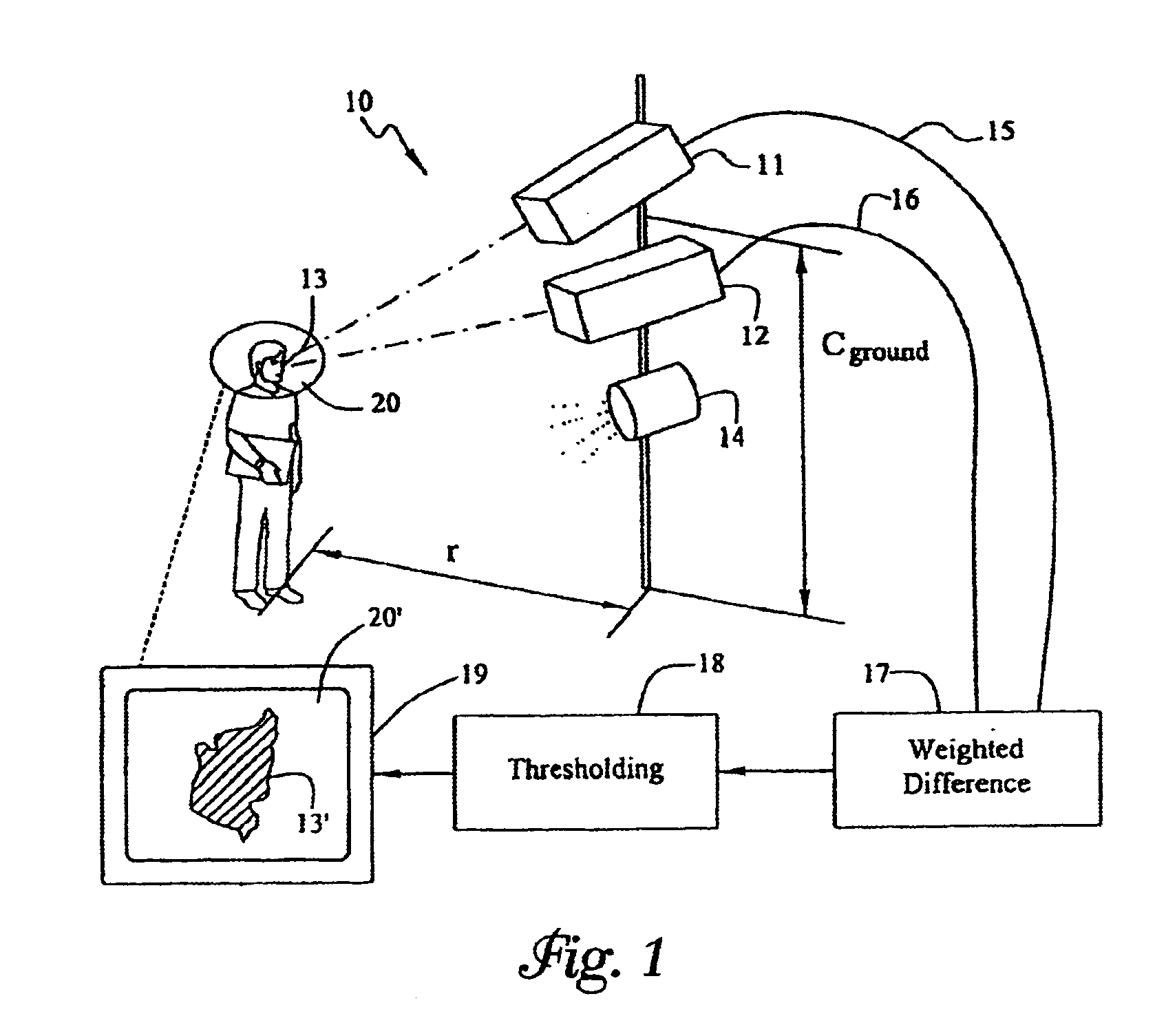Near-infrared disguise detection
a disguise detection and near-infrared technology, applied in the field of detection systems and methods, can solve the problems of ineffective face identification processes, inability to determine whether an individual is wearing a facial disguise, and inability to know the possible disguise used by the individual, etc., and achieve excellent disguise detection results
- Summary
- Abstract
- Description
- Claims
- Application Information
AI Technical Summary
Benefits of technology
Problems solved by technology
Method used
Image
Examples
Embodiment Construction
[0017]FIG. 1 shows a near-infrared fusion system for detecting humans.
[0018]FIG. 2A illustrates a co-registration scheme for two cameras.
[0019]FIG. 2B shows an alternate embodiment for co-registration of the cameras.
[0020]FIG. 3 is a histogram of the number of pixels versus spectral power for an image frame.
[0021]FIG. 4 is a graph of the electromagnetic (EM) spectrum.
[0022]FIG. 5 reveals the infrared transmittance characteristics for an automobile windshield.
[0023]FIG. 6 reveals the infrared transmittance characteristics for an automobile side window.
[0024]FIG. 7 is a graph showing the percentage of reflectance for Caucasian males of light and dark complexions.
[0025]FIG. 8 is a graph showing the percentage of reflectance for Asian males of light and dark complexions.
[0026]FIG. 9 is a graph showing the percentage of reflectance for black males of light and dark complexions.
[0027]FIG. 10 is a graph showing a comparison of reflectance for light and dark skin.
[0028]FIG. 11 is a graph of...
PUM
 Login to View More
Login to View More Abstract
Description
Claims
Application Information
 Login to View More
Login to View More - R&D
- Intellectual Property
- Life Sciences
- Materials
- Tech Scout
- Unparalleled Data Quality
- Higher Quality Content
- 60% Fewer Hallucinations
Browse by: Latest US Patents, China's latest patents, Technical Efficacy Thesaurus, Application Domain, Technology Topic, Popular Technical Reports.
© 2025 PatSnap. All rights reserved.Legal|Privacy policy|Modern Slavery Act Transparency Statement|Sitemap|About US| Contact US: help@patsnap.com



